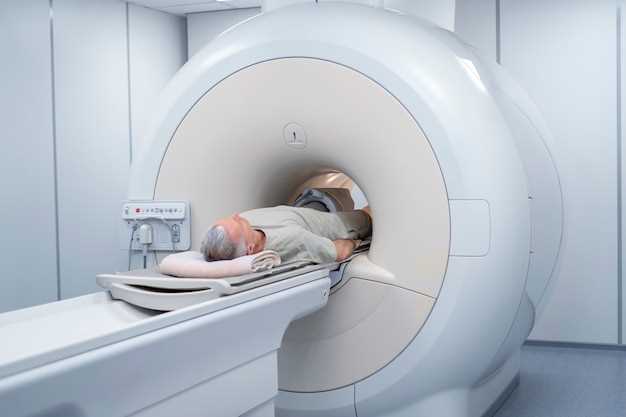
Metronidazole is a commonly prescribed antibiotic that can lead to central nervous system (CNS) toxicity in some patients. If you suspect CNS toxicity from metronidazole, MRI imaging can provide crucial insights into the condition.
With advanced MRI technology, healthcare professionals can accurately assess the impact of metronidazole on the CNS, helping to guide treatment decisions and improve patient outcomes. Don’t wait, learn more about metronidazole CNS toxicity and MRI imaging today.
Definition and Usage

Metronidazole is an antibiotic and antiprotozoal medication used to treat various bacterial and parasitic infections in the body. It belongs to a class of medications known as nitroimidazoles, which work by inhibiting the growth of certain bacteria and parasites.
This medication is commonly used to treat infections in the gastrointestinal tract, skin, vagina, and other areas of the body. It is also used to treat certain types of infections caused by protozoa, such as trichomoniasis and giardiasis.
Metronidazole is available in various forms, including oral tablets, capsules, and intravenous solutions. It is usually prescribed by a healthcare provider and should be taken exactly as directed to ensure the best possible outcome.
Definition and Usage
Metronidazole is an antibiotic and antiprotozoal medication that is commonly used to treat various bacterial and parasitic infections. It is considered a nitroimidazole derivative and works by disrupting the DNA structure of the microorganisms, leading to their death.
This medication is primarily used to treat infections caused by anaerobic bacteria, such as bacterial vaginosis, pelvic inflammatory disease, and various gastrointestinal infections. It is also effective in treating parasitic infections, including amoebiasis and giardiasis.
Metronidazole is available in various formulations, including oral tablets, capsules, and intravenous injection. The dosage and duration of treatment vary depending on the type and severity of the infection, as well as the patient’s age and overall health status.
It is important to follow the prescribed dosage and duration of treatment to ensure the effectiveness of metronidazole and reduce the risk of developing antibiotic resistance. Consult a healthcare provider for proper diagnosis and treatment recommendations.
Pharmacology and Mechanism
Metronidazole is a synthetic nitroimidazole antibiotic that exerts its antimicrobial effect by disrupting the DNA of microbial cells. It enters the bacterial cell where it is reduced by enzymes, creating reactive intermediates that damage DNA and lead to cell death.
Mechanism of Action:
- Metronidazole is selectively toxic to anaerobic bacteria and protozoa due to their ability to reduce the drug intracellularly, creating cytotoxic compounds that disrupt DNA and inhibit nucleic acid synthesis.
- It has high tissue penetration, especially in the CNS, allowing it to target infections in the brain and spinal cord.
- Metronidazole’s bactericidal activity is concentration-dependent, with higher doses achieving greater bacterial killing.
Understanding the pharmacology and mechanism of metronidazole is essential for its effective clinical use in treating various infections.
Clinical Use of Metronidazole
Metronidazole is an antibiotic medication that is commonly used to treat various bacterial and parasitic infections. It is effective against a wide range of pathogens, including anaerobic bacteria and protozoa.
Common Infections Treated with Metronidazole
Metronidazole is commonly prescribed for the treatment of infections such as:
- Bacterial vaginosis
- Trichomoniasis
- Giardiasis
- Helicobacter pylori infections
Dosage and Administration
The dosage and duration of treatment with metronidazole depend on the specific infection being treated and the patient’s medical history. It is important to follow the dosage instructions provided by your healthcare provider and to complete the full course of treatment to ensure the infection is fully eradicated.
Adverse Effects and Toxicity
Metronidazole is generally well tolerated, but like any medication, it can have adverse effects. The most common side effects of metronidazole include:
Common Adverse Effects:

- Gastrointestinal Disturbances: Such as nausea, vomiting, diarrhea, and abdominal pain.
- Headache: Some patients may experience headaches while taking metronidazole.
- Metallic Taste: A metallic taste in the mouth is a known side effect of metronidazole.
While these side effects are usually mild and resolve on their own, there are more severe adverse effects and toxicity associated with metronidazole that require immediate medical attention. These include:
Severe Adverse Effects:
- Allergic Reactions: Rarely, some individuals may experience severe allergic reactions to metronidazole, such as rash, itching, swelling, and difficulty breathing. Seek medical help if you experience these symptoms.
- Neurotoxicity: In rare cases, metronidazole can cause neurotoxicity, resulting in symptoms such as seizures, encephalopathy, and peripheral neuropathy. Discontinue the medication and consult a healthcare provider immediately if you experience any neurological symptoms.
- Hematologic Effects: Metronidazole can affect blood cell counts, leading to conditions such as leukopenia (low white blood cell count) or thrombocytopenia (low platelet count). If you notice unusual bruising, bleeding, or persistent infections, inform your healthcare provider.
It’s essential to follow the prescribed dosage and duration of treatment with metronidazole to minimize the risk of adverse effects and toxicity. If you have any concerns about the medication or experience any unusual symptoms, contact your healthcare provider promptly.
Adverse Effects and Toxicity
Metronidazole is generally well-tolerated, but like any medication, it can cause adverse effects and toxicity in some individuals. Common side effects include nausea, vomiting, diarrhea, and metallic taste in the mouth. In rare cases, more serious adverse effects such as peripheral neuropathy, seizures, and encephalopathy can occur.
Peripheral Neuropathy
Peripheral neuropathy is a potential adverse effect of metronidazole, characterized by tingling, numbness, and weakness in the extremities. It is typically reversible upon discontinuation of the medication, but in some cases, symptoms may persist.
Seizures and Encephalopathy
Seizures and encephalopathy are rare but serious adverse effects of metronidazole, particularly with high doses or prolonged use. Patients may experience confusion, altered mental status, and seizures. These effects usually resolve with drug discontinuation.
| Adverse Effect | Symptoms | Management |
|---|---|---|
| Peripheral Neuropathy | Tingling, numbness, weakness | Discontinue metronidazole |
| Seizures and Encephalopathy | Confusion, altered mental status, seizures | Discontinue metronidazole, seizure management |
MRI Findings in CNS Toxicity
Metronidazole-induced central nervous system (CNS) toxicity can manifest on magnetic resonance imaging (MRI) studies with specific characteristic findings.
Common MRI Findings
-
Signal abnormalities in the splenium of the corpus callosum are a hallmark feature of metronidazole toxicity on MRI.
-
Other common findings include hyperintense T2 signal changes with restricted diffusion in the dentate nuclei of the cerebellum.
-
Additional MRI findings may include white matter hyperintensities and cortical and subcortical lesions.
Overall, MRI plays a crucial role in the diagnosis and monitoring of metronidazole-induced CNS toxicity by demonstrating specific neuroimaging findings associated with the condition.
MRI Findings in CNS Toxicity
Metronidazole-induced CNS toxicity can be detected on MRI scans, showing specific imaging characteristics that can help in diagnosis and management. The most common MRI findings in metronidazole toxicity include:
| Hyperintense Signals | On T2-weighted images, hyperintense signals may be observed in the cerebellar dentate nuclei, brainstem, and corpus callosum. |
| Restricted Diffusion | Diffusion-weighted imaging (DWI) may reveal restricted diffusion in affected areas, indicating cytotoxic edema. |
| Enhancement Patterns | Post-contrast T1-weighted images may show enhancement in the areas of hyperintensity, suggesting blood-brain barrier disruption. |
| Cerebellar Atrophy | In chronic cases, cerebellar atrophy may be observed on MRI, indicating long-term neurological damage. |
Recognition of these imaging characteristics can aid in early detection of metronidazole toxicity and prompt initiation of appropriate management strategies.
